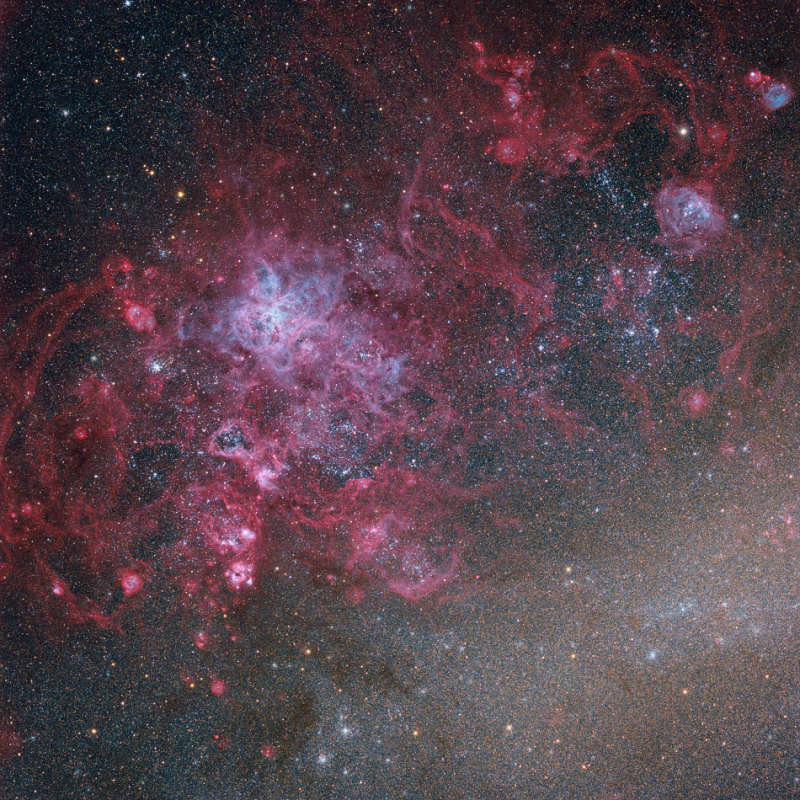Credit & Copyright: Marco Lorenzi
Explanation:
The
Tarantula Nebula is more than 1,000 light-years in diameter,
a giant star forming region within our neighboring galaxy
the Large Magellanic Cloud (LMC).
That cosmic arachnid lies toward the upper left in this deep and
colorful
telescopic view made through broad-band and
narrow-band filters.
The image spans nearly 2 degrees (4 full moons) on the sky and
covers a part of the LMC over 8,000 light-years across.
Within the Tarantula (NGC 2070), intense radiation,
stellar winds and supernova shocks from the central young cluster of massive
stars, cataloged as R136,
energize the nebular glow and shape the spidery filaments.
Around the Tarantula
are other violent star-forming regions with
young star clusters, filaments, and
bubble-shaped clouds
In fact, the frame includes the
site of the closest supernova in modern times,
SN 1987A,
just above center.
The rich field of view is located in the southern
constellation
Dorado.
1999 2000 2001 2002 2003 2004 2005 2006 2007 2008 2009 2010 2011 2012 2013 2014 2015 2016 2017 2018 2019 2020 2021 2022 2023 2024 2025 |
Январь Февраль Март Апрель Май Июнь Июль Август Сентябрь Октябрь Ноябрь Декабрь |
NASA Web Site Statements, Warnings, and Disclaimers
NASA Official: Jay Norris. Specific rights apply.
A service of: LHEA at NASA / GSFC
& Michigan Tech. U.
|
Публикации с ключевыми словами:
LMC - Туманность Тарантул - звездообразование - Большое Магелланово Облако
Публикации со словами: LMC - Туманность Тарантул - звездообразование - Большое Магелланово Облако | |
См. также:
Все публикации на ту же тему >> | |
